Today Current Affairs: 18th February 2021 for UPSC IAS exams, State PSC exams, SSC CGL, State SSC, RRB, Railways, Banking Exam & IBPS, etc
Table of Contents
Financial Powers For Senior Officers:

The Cabinet has approved enhanced delegation of financial powers for capital procurement to senior officers below the rank of Vice-Chief of armed forces.
- The delegation of power will help in the modernization of Armed forces.
Defence Procurement Procedure 2020:
- It was unveiled in September 2020.
- The new policy superseded the Defence Procurement Procedure of 2016 from October 1, 2020.
- The DAP contains policies and procedures for procurement and acquisition from the capital budget of the MoD in order to modernise the Armed Forces including the Coast Guard.
Highlights of the new policy:
- Reservations for Indigenous firms:
- The policy reserves several procurement categories for indigenous firms.
- DAP 2020 defines an “Indian vendor” as a company that is owned and controlled by resident Indian citizens, with foreign direct investment (FDI) not more than 49 per cent.
- New Buy (Global–Manufacturer in India) category:
- This stipulates indigenisation of at least 50 per cent of the overall contract value of a foreign purchase bought with the intention of subsequently building it in India with technology transfer.
- Greater indigenous content:
- It promotes greater indigenous content in arms and equipment of the military procures, including equipment manufactured in India under licence. In most acquisition categories, DAP-2020 stipulates 10 per cent higher indigenisation than DPP 2016.
- Import embargo list:
- The “import embargo list” of 101 items that the government had promulgated has been specifically incorporated into DAP 2020. (An embargo is a government order that restricts commerce with a specified country or the exchange of specific goods.)
- Offset liability:
- The government has decided not to have an offset clause in the procurement of defence equipment if the deal is done through inter-government agreement (IGA), government-to-government or an ab initio single vendor.The offset clause requires a foreign vendor to invest a part of the contract value in India.
Certified Jute Seed Distribution Plan:
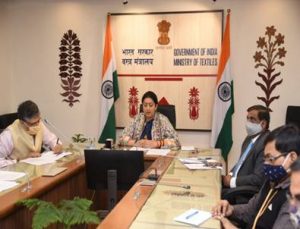
The Ministry of Textiles has launched a Certified Jute Seed Distribution Plan under Jute ICARE Program.
- Jute Corporation of India (JCI) had in 2019, signed an MoU (Memorandum of Understanding) with National Seeds Corporation for commercial distribution of 1,000 Metric Tonne certified jute seeds for the year 2021-22.
Certified Jute Seed Distribution Plan:
- It will expand usage of certified seeds to over 55% area under Jute Cultivation.
- A certified seed shall be the progeny of foundation seed and its products shall be so handled as to maintain specific genetic identity and purity according to the standards prescribed for the crop being certified.
- It will extend the benefit of certified seeds to nearly 5 lakh farmers.
Usage of certified jute seeds has resulted in improved quality of jute by 1 grade and enhanced productivity by 15% thereby increasing income of jute farmers by about Rs. 10,000/hectare.
Jute ICARE Program:
- Launch: Improved Cultivation and Advanced Retting Exercise for Jute (Jute ICARE) was launched in 2015.
- The program was initiated by the National Jute Board (NJB) in association with Central Research Institute for Research in Jute and Allied Fibres (CRIJAF) & Jute Corporation of India (JCI).
- Aims: At mechanization in jute farming in a farmer-friendly way and accelerated retting using microbial consortium for improved income for jute farmers.
- Following Inputs are Provided:
- 100% Certified Seeds at a subsidized rate.
- Demonstration of scientific jute cultivation practices for adoption at farmers’ fields with mechanical intervention distribution of seed drill / Nail Weeder/Cycle Weeder.
- Demonstration of Microbial retting using CRIJAF SONA, a microbial consortium and also distribution to the farmers.
- Retting is the process of extracting fiber from the stem of the plants.
- So far, Government has supported 2.60 lakhs farmers under ICARE Program.
UN Peacekeepers:

India to gift 2 lakh vaccine doses to UN peacekeepers.
- The announcement was made by External Affairs Minister S. Jaishankar during his remarks at a UN Security Council open debate on the implementation of resolution 2532 (2020), passed last year.
UNSC Resolution 2532:
The resolution:
- Demands a general and immediate cessation of hostilities in all situations on its agenda” (i.e., those already identified by the United Nations Security Council (UNSC)).
- Calls for all parties engaged in armed conflicts (i.e., including those not specifically on the UNSC agenda) to “engage immediately in a durable humanitarian pause for at least 90 consecutive days”.
- Specifically excludes UNSC designated terrorist groups, e.g., the Islamic State in Iraq and the Levant.
Peacekeeping:
- United Nations Peacekeeping is a joint effort between the Department of Peace Operations and the Department of Operational Support.
- Every peacekeeping mission is authorized by the Security Council.
- The financial resources of UN Peacekeeping operations are the collective responsibility of UN Member States.
- According to the UN Charter, every Member State is legally obligated to pay their respective share for peacekeeping.
- Composition:
- UN peacekeepers (often referred to as Blue Berets or Blue Helmets because of their light blue berets or helmets) can include soldiers, police officers, and civilian personnel.
- Peacekeeping forces are contributed by member states on a voluntary basis.
- The civilian staff of peace operations is international civil servants, recruited and deployed by the UN Secretariat.
Pakistan To Remain In FATF Grey List:

The FATF’s Plenary and Working Group meetings, scheduled to be held from February 21 to 26 in Paris, is all set to decide on Pakistan’s grey list status. However, Pakistan is unlikely to exit the Financial Action Task Force’s (FATF) ‘grey’ list until June.
- Pakistan was placed on the ‘grey’ list in June 2018 and given a timeline to implement 27 action points.
About FATF:
- The Financial Action Task Force (FATF) is an inter-governmental body established in 1989 on the initiative of the G7.
- It is a “policy-making body” that works to generate the necessary political will to bring about national legislative and regulatory reforms in various areas.
- The FATF Secretariat is housed at the OECD headquarters in Paris.
- Roles and functions:
- Initially, it was established to examine and develop measures to combat money laundering.
- In October 2001, the FATF expanded its mandate to incorporate efforts to combat terrorist financing, in addition to money laundering.
- In April 2012, it added efforts to counter the financing of the proliferation of weapons of mass destruction.
- Composition:
- The FATF currently comprises 37 member jurisdictions and 2 regional organisations, representing most major financial centres in all parts of the globe. It also has observers and associate members.
Blacklist and Greylist:
- Black List: Countries known as Non-Cooperative Countries or Territories (NCCTs) are put in the blacklist. These countries support terror funding and money laundering activities. The FATF revises the blacklist regularly, adding or deleting entries.
- Grey List: Countries that are considered safe haven for supporting terror funding and money laundering are put in the FATF grey list. This inclusion serves as a warning to the country that it may enter the blacklist.
Production-Linked Incentive Scheme For The Telecom Sector:
The Union Cabinet has approved the production-linked incentive scheme for the telecom sector with an outlay of ₹12,195 crore over five years.
- The implementation scheme will start on April 1, 2021.
- The scheme is expected to encourage the production of equipment worth Rs 2.44 lakh crore and create direct and indirect employment for about 40,000 people.
- The scheme is expected to bring an investment of over Rs 3,000 crore and generate significant direct and indirect employment and taxes.
About the PLI scheme:
- The scheme aims to make India a global hub for manufacturing telecom equipment.
- Its eligibility criteria include the achievement of a minimum threshold of cumulative incremental investment and incremental sales of manufactured goods.
- The incentive structure ranges between 4% and 7% for different categories and years.
- The financial year 2019-20 will be treated as the base year for computation of cumulative incremental sales of manufactured goods net of taxes.
- The minimum investment threshold for MSMEs has been kept at Rs 10 crore and for others at Rs 100 crore.
Once qualified, the investor will be incentivized up to 20 times of minimum investment threshold enabling them to utilise their unused capacity.
NASA Perseverance:

After a seven months’ journey from Earth, the NASA Perseverance is in its final stretch towards destination Mars.
About the Perseverance rover:
- Launched in July of 2020.
- It is expected to touch down on Mars at the Jezero Crater.
- The primary task of Perseverance is to seek signs of ancient life and collect samples of rock and regolith to possibly return these to Earth.
- Perseverance is fueled by electrical power by using the heat of plutonium’s radioactive decay.
- NASA Perseverance gets shape memory alloys to remain steady on the surface of Mars.
- Armed with drills, cameras, and lasers, Perseverance is set to explore Mars.
- Perseverance will carry a unique instrument, MOXIE or Mars Oxygen ISRU Experiment: which for the first time will manufacture molecular oxygen on Mars using carbon dioxide from the carbon-dioxide-rich atmosphere (ISRU means In Situ Resource Utilization: or the use of local resources to meet human needs or requirements of the spacecraft).
- It will carry Ingenuity, the first-ever helicopter to fly on Mars. This is the first time NASA will fly a helicopter on another planet or satellite.
Comprehensive Economic Cooperation and Partnership Agreement (CECPA) between India and Mauritius:
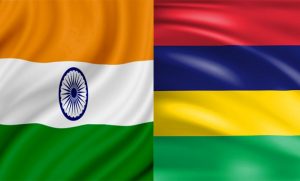
The Union Cabinet has approved the signing of the Comprehensive Economic Cooperation and Partnership Agreement (CECPA) between India and Mauritius.
The salient features of India-Mauritius CECPA are as follows:
- The India-Mauritius CECPA will be the first trade agreement to be signed by India with a country in Africa.
- The Agreement is a limited agreement, which will cover Trade in Goods, Rules of Origin, Trade in Services, Technical Barriers to Trade (TBT), Sanitary and Phytosanitary (SPS) measures, Dispute Settlement, Movement of Natural Persons, Telecom, Financial Services, Customs Procedures and Cooperation in other Areas
- CECPA provides for an institutional mechanism to encourage and improve trade between the two countries.
- Both sides have also agreed to negotiate an Automatic Trigger Safeguard Mechanism (ATSM) for a limited number of highly sensitive products within two years of the Signing of the Agreement.
National Hydrogen Mission:

India has announced a National Hydrogen Mission. The proposal in the Budget will be followed up with a mission draft over the next couple of months.
- And while proposed end-use sectors include steel and chemicals, the major industry that hydrogen has the potential of transforming is transportation — which contributes a third of all greenhouse gas emissions.
- In October, Delhi became the first Indian city to operate buses running on hydrogen spiked compressed natural gas (H-CNG) in a six-month pilot project.
- The buses will run on a new technology patented by Indian Oil Corp for producing H-CNG — 18 percent hydrogen in CNG — directly from natural gas, without resorting to conventional blending.
- IOC is also planning to set up a dedicated unit to produce hydrogen to run buses at its R&D center in Faridabad.
- As a supporting regulatory framework, the Ministry of Road Transport and Highways late last year issued a notification proposing amendments to the Central Motor Vehicles Rules, 1989, to include safety evaluation standards for hydrogen fuel cell-based vehicles.
3rd Ministerial Meeting Over Inclusive Indo-Pacific:
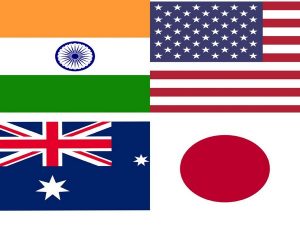
The Quadrilateral Security Dialogue (Quad) will hold its 3rd ministerial meeting on February 18, 2021.
Highlights:
- The meeting will be held to exchange their views on global and regional issues.
- It will focus on the practical areas of cooperation in order to maintain an open, free, and inclusive Indo-Pacific region.
- The 3rd ministerial meeting of the Quad members namely, India-Australia-Japan-US will involve the participation of their foreign ministers.
- They all will be presenting different agendas during the meeting.
- This meeting is the continuation of the views that were exchanged in the 2nd QUAD meeting of October 6, 2020, that was held in Tokyo.
- The first meeting of Quad was organized in the year 2019 in New York.
- The Foreign Ministers of Australia, India, the USA, and Japan will exchange their views on the global and regional issues during the meeting.
- They will also discuss the ongoing efforts of combating the Covid-19 pandemic.
- The ministers will also be discussing and addressing global climate change and other issues of mutual interest.
- It is expected that the initiative would put an end to the growing economic influence of China.
- The cooperation with Japan and other allies will help in countering the Chinese development assistance and its domination in the region including the Indo-Pacific.
World Solar Bank:
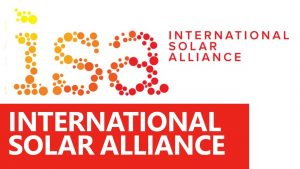
The International Solar Alliance (ISA) has planned to launch the World Solar Bank (WSB) at the United Nations Climate Change Conference in Glasgow that is scheduled for November 2021.
Highlights
- The development of the World Solar Bank will support India’s attempt to secure its leadership in the climate arena.
- The development of the bank is significant because green finance will be one of the priority themes at the climate meet called COP-26.
- COP-26 will be organized in the backdrop of the US rejoining the Paris climate accord.
- The headquarter of the World Solar Bank is expected to be set up in India.
- It will be the first multilateral development bank (MDB) that will be set up in India.
- The WSB has planned to disburse around $50 billion to the member countries of ISA over the next 10 years.
World’s Debt To Increase In 2021:
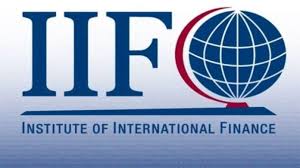
The Institute of International Finance (IIF) has reported that the world has never been more indebted before and the debt will further rise in the year 2021 with more borrowing ahead amid the covid-19 led economic crisis.
Key Findings of IIF:
- As per the IIF, governments, companies, and households have raised $24 trillion in 2020 in order to offset the economic toll.
- This has resulted in an all-time high increase in global debt.
- As of year, 2020, the World’s debt stands at $281 trillion.
- This accounts for more than 355 percent of global GDP.
- The IIF further stated that this debt will increase as a result of more borrowings.
- IIF also estimates that governments are facing the challenge of big budget deficits.
- This will increase by another $10 trillion in the year 2021 since the political and social pressures push for more spending.
- This in turn will increase the debt load past $92 trillion by the end of 2021.
- IIF also states that both mature and emerging markets will look for a perfect balance.
- The economic recovery may push the governments to start developing strategies in order to roll back the stimulus. This could increase the default and bankruptcy risk.
Virtually Launch Of ‘Mahabahu-Brahmaputra’ Initiative In Assam:

Prime Minister Narendra Modi will virtually launch the ‘Mahabahu-Brahmaputra’ initiative in Assam on February 18, 2021.
Highlights
- He will lay the foundation stone for the Dhubri Phulbari bridge.
- PM will also perform the bhumi pujan for the construction of the Majuli Bridge in Assam.
- PM while announcing the details stated that it will be a landmark day in the development journey for Assam as the Mahabahu-Brahmaputra initiative is going to be launched.
Mahabahu-Brahmaputra initiative:
- Launch of the Mahabahu-Brahmaputra initiative is going to be marked with the inauguration of the Ro-Pax vessel operations.
- The Ro-Pax vessel operations will be launched in between the Neamatighat & Majuli, Dhubri-Hatsingimari and North-South Guwahati.
- This initiative also includes the inauguration of the Inland Water Transport Terminal at Jogighopa.
- The initiative will also be marked with the inauguration of various tourist jetties at four locations in order to promote river tourism and employment across the state.
- This initiative is being started with the aim to provide seamless connectivity to Eastern Parts of India.
- It also comprises of various development activities for people living across the Barak and Brahmaputra rivers.




